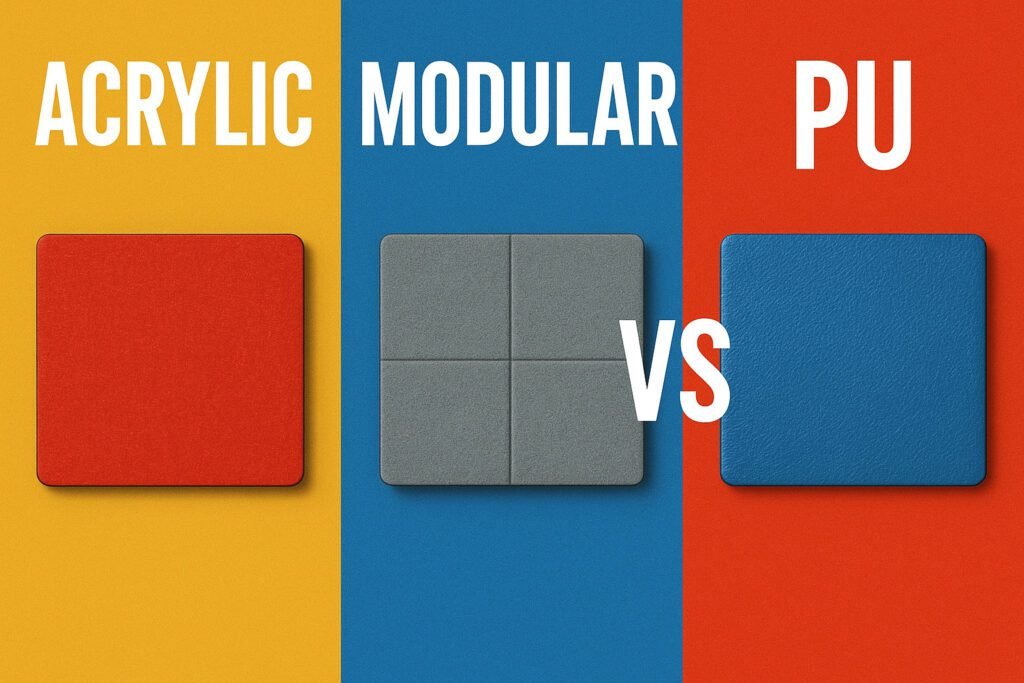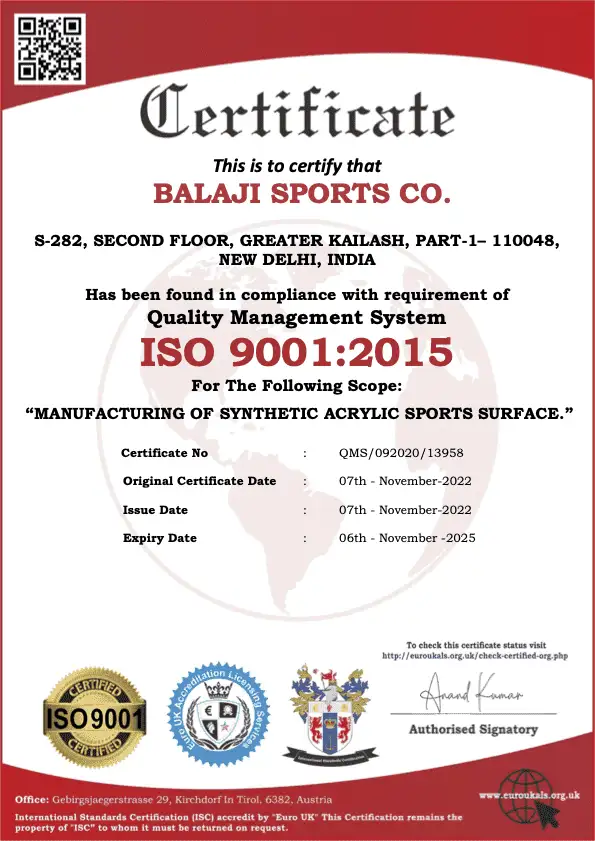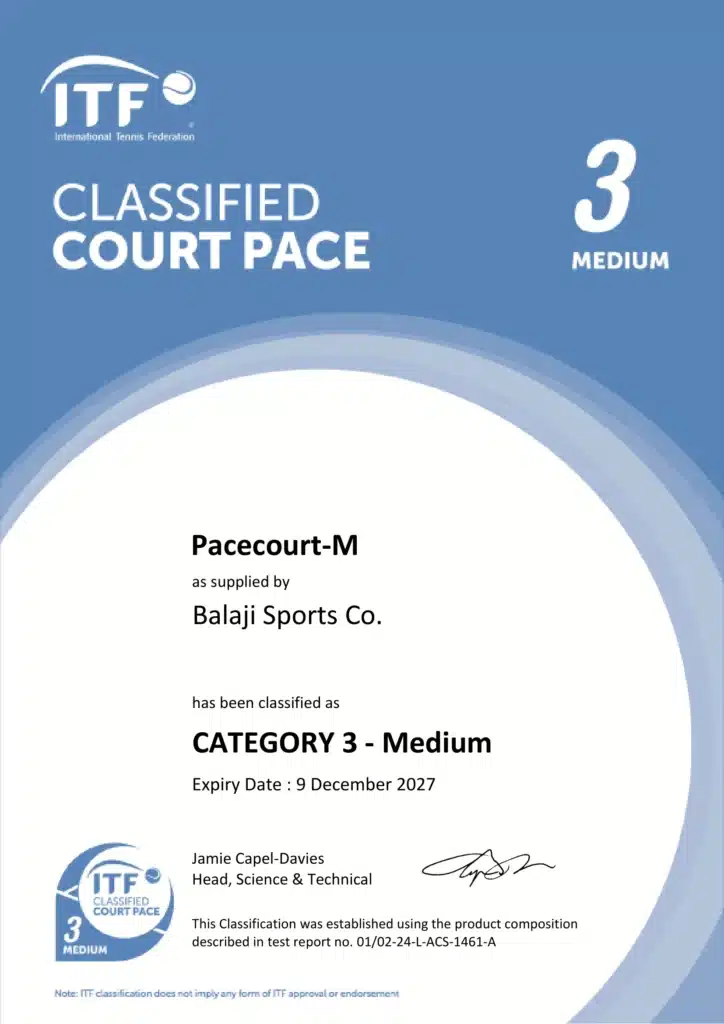Acrylic vs Modular Tiles vs PU: Total Cost of Ownership Over 5 Years in Indian Climates
Did you know that 70% of flooring investment decisions in India focus solely on upfront costs, completely ignoring what happens over the next five years? This oversight can lead to expenses that triple your initial budget. When choosing between Acrylic, Modular Tiles, and PU flooring for your space, the sticker price tells only part of the story. The real financial impact unfolds over years through maintenance costs, replacements, and performance under India’s demanding climate conditions. India’s diverse weather presents unique challenges that can make or break your flooring investment. From Mumbai’s relentless humidity and coastal salt exposure to Delhi‘s scorching summers and dust storms, from Bangalore’s moderate climate to the Northeast’s heavy monsoons – each region tests flooring materials differently. What performs beautifully in controlled conditions might crack, fade, or deteriorate rapidly under India’s extreme temperatures, seasonal flooding, and year-round dust. Understanding Total Cost of Ownership (TCO) isn’t just smart – it’s essential for making decisions that protect your investment and deliver long-term value. In this comprehensive analysis, we’ll break down the true costs of each flooring option over five years, factoring in India’s climate realities, so you can choose the solution that makes financial sense for your specific needs and location. Understanding the Flooring Options Before diving into cost calculations, let’s examine each flooring type to understand what you’re comparing. Each material brings distinct characteristics that directly impact performance and long-term costs in Indian conditions. Acrylic Flooring Acrylic flooring is a synthetic surface made from acrylic resins and polymer compounds. This seamless flooring system creates a durable, non-porous surface that’s gained popularity in India’s commercial and recreational spaces. Common Applications: Pros: Cons: Modular Tiles Modular tiles are interlocking plastic or rubber tiles that snap together without adhesives. These tiles offer flexibility and have become increasingly popular for both indoor and outdoor applications across India. Common Applications: Pros: Cons: PU (Polyurethane) Flooring PU flooring is a liquid-applied system that cures into a seamless, flexible surface. This European technology has adapted well to Indian industrial needs, offering excellent chemical and abrasion resistance. Common Applications: Pros: Cons: Each flooring type serves specific needs, and understanding these characteristics helps predict their performance and costs over five years in India’s challenging climate conditions. Key Factors Affecting TCO in Indian Climates When calculating the true cost of flooring over five years in India, the initial purchase price represents just the tip of the iceberg. Several interconnected factors determine whether your investment delivers value or becomes a financial burden. Understanding these elements helps you make decisions based on long-term performance rather than short-term savings. Durability Under Extreme Conditions India’s climate extremes test flooring materials in ways that mild climates never do. Temperature swings from 5°C to 50°C, humidity levels exceeding 90%, and UV radiation intensity that ranks among the world’s highest create a perfect storm for material degradation. Heat Stress Impact: Thermal expansion and contraction cycles cause different materials to respond uniquely. While PU flooring maintains structural integrity across temperature ranges, modular tiles may develop gaps during extreme heat. Acrylic surfaces can soften under intense sun exposure, affecting performance and appearance. Moisture Challenges: India’s monsoon season brings prolonged exposure to standing water and high humidity. Materials that absorb moisture risk warping, bacterial growth, and structural failure. The cost of premature replacement due to moisture damage can double your five-year investment. UV Degradation: Continuous exposure to intense Indian sunlight breaks down polymer chains in flooring materials, leading to color fading, surface chalking, and reduced flexibility. This degradation directly impacts both aesthetics and structural performance. Maintenance Cost Variables Maintenance expenses often exceed initial installation costs over five years, making this factor crucial for accurate TCO calculations. Cleaning Requirements: Each material demands different cleaning protocols. PU flooring requires minimal maintenance with standard cleaning equipment, while modular tiles need regular attention to seam areas where debris accumulates. Acrylic surfaces may need specialized cleaning products to maintain their appearance. Repair Frequency: Climate-related damage patterns vary significantly. Modular tiles allow easy replacement of individual damaged sections, potentially reducing repair costs. However, seamless surfaces like PU and acrylic may require professional intervention for repairs, increasing both material and labor expenses. Professional vs. DIY Maintenance: Some materials allow in-house maintenance staff to handle routine care, while others require specialized service providers. This difference can create annual cost variations of ₹50-200 per square meter. Installation Cost Complexity Initial installation costs extend beyond material prices to include preparation, labor, and timing considerations specific to Indian conditions. Weather Window Requirements: Installation timing becomes critical in India’s climate zones. PU flooring requires specific temperature and humidity conditions during application, potentially limiting installation to certain months. This seasonal restriction can affect project timelines and costs. Surface Preparation Needs: India’s construction standards vary widely, often requiring extensive substrate preparation. Poor foundation work can double installation costs and compromise long-term performance, directly impacting TCO calculations. Labor Skill Requirements: The availability of skilled installers varies by region and material type. Specialized installations like PU flooring may require bringing technicians from major cities, adding travel and accommodation costs to rural or smaller city projects. Weather Resistance Performance India’s diverse climate zones create different stress patterns that affect material longevity and performance costs. Monsoon Resilience: Heavy rainfall and flooding test drainage capabilities and water resistance. Materials that fail during monsoon seasons require emergency repairs or replacement, creating unexpected costs and business disruption. Dust and Pollution Tolerance: Urban environments in cities like Delhi and Mumbai expose flooring to high levels of particulate matter and chemical pollutants. Materials that show staining or degradation require more frequent cleaning or refinishing, increasing operational costs. Thermal Shock Resistance: Rapid temperature changes, especially during pre-monsoon periods, stress material joints and surface integrity. Repeated thermal cycles accelerate wear patterns and reduce overall lifespan. Aesthetic Longevity Impact Appearance deterioration affects both functional performance and replacement timing, directly influencing TCO calculations. Color Stability: UV exposure and chemical interaction cause color changes that may necessitate early replacement for aesthetic reasons, even when structural integrity remains intact. This factor particularly affects customer-facing spaces where




